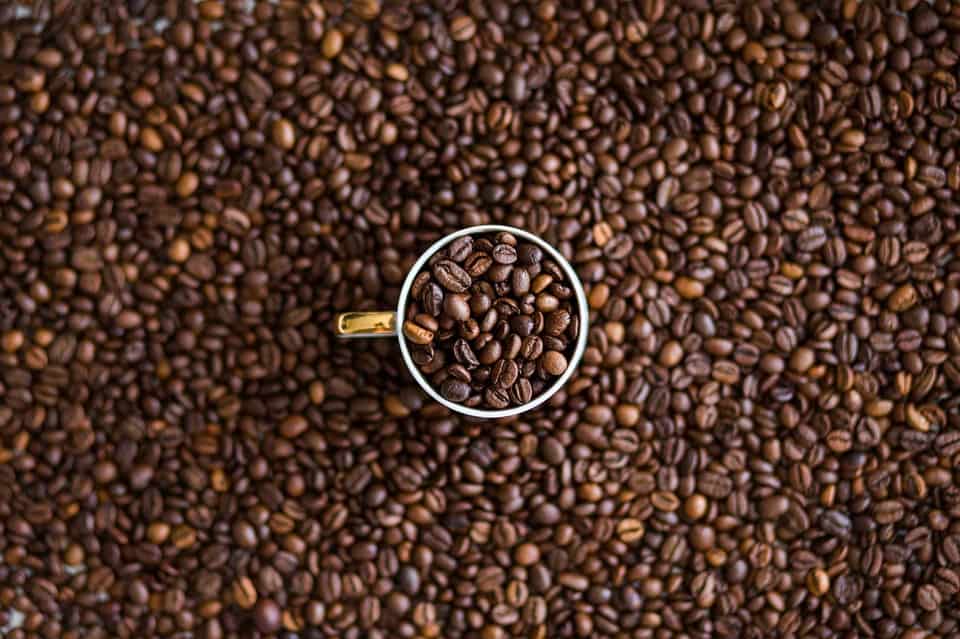Can used coffee grounds be an alternative to plastic packaging?
- September 23, 2023
- 0
Coffee is the most popular beverage in the world after water and the second most traded commodity in the world after oil. It is estimated that people drink
Coffee is the most popular beverage in the world after water and the second most traded commodity in the world after oil. It is estimated that people drink

Coffee is the most popular beverage in the world after water and the second most traded commodity in the world after oil. It is estimated that people drink more than 2 billion cups of coffee a day; More than 60% of Americans drink a cup of coffee every day. As a result, more than 8 million tons of used coffee grounds are thrown away every year.
What if these coffee grounds could be used as environmentally friendly packaging material instead of being thrown into the landfill?
Although this may seem like a fanciful idea, new research by Srinivasa Janaswamy, an assistant professor in the Department of Dairy and Food Sciences at South Dakota State University, has shown how used coffee grounds can be turned into biodegradable films; replace the plastic. The study, titled “Biodegradable, Ultraviolet and Antioxidant Films from Spent Coffee Ground Lignocellulosic Fibers”, was published in the International Journal. journal of biological macromolecules.
Plastic is an almost “perfect” packaging material because it is strong, flexible, and relatively cheap to produce. However, plastics are a serious environmental problem. Although most plastic is recyclable, it is thrown into landfills or landfills where it will biodegrade within 700 years. There are miles of plastic garbage floating aimlessly in the oceans, including the Great Pacific Garbage Patch, which is the size of Texas and is now growing, highlighting the growing environmental crisis caused by over-reliance on plastic.
Microplastics are a growing concern; It is a relatively new scientific discovery that shows that microscopic pieces of plastic end up in the food and water consumed by humans. To date, almost no research has been done on the long-term effects of microplastics on human health.
A safe, environmentally friendly plastic alternative is needed.
“Plastics are a wide variety of materials designed to meet many daily needs,” Janaswamy said. “Replacing all existing types of plastic is far from possible at this stage. However, replacing low-cost traditional plastic products used in daily production, which account for the largest share of environmental pollutants, is real and achievable.”
For the past few years, Janaswamy has focused his research efforts on creating biodegradable alternatives to plastics, mostly from agricultural byproducts. Janaswamy had previously been making films from cellulose-rich avocado peels and corn foam.
“This project is a continuation of my ongoing efforts to develop films that can replace plastic,” Janaswamy said.
Spent coffee grounds were chosen as the starting material for several different reasons. First, used coffee grounds are widely available and millions of tons are produced each year. While many end up in landfills, some are used for other purposes, such as gardening. While this may seem like an environmentally friendly move, as Janaswamy points out, it can actually cause environmental problems.
“We usually throw away the coffee grounds after making the coffee,” Janaswamy said. “Some of us use them for landscaping, gardening, and other things. Ironically, this process requires a lot of oxygen and releases a lot of methane, which contributes to global warming.”
Second, as developing economies add chain coffee shops like Starbucks, the amount of wasted coffee grounds will increase. Harnessing this untapped resource for biodegradable films is a sustainable and cost-effective solution to the plastic crisis. Finally, spent coffee grounds contain lignocellulosic fibers, an essential material for film production.
To prepare the films, the research team first extracted lignocellulosic fibers from spent coffee beans. An environmentally friendly chemical modification process was then applied to make the film more suitable for packaging. The resulting films were biodegradable in soil within 45 days and also had high tensile strength. The films also had some unique features that researchers noted.
“Interestingly, these films can block significant amounts of UV radiation and exhibit antioxidant properties,” Janaswamy explained. “I truly believe that the results of this study open new opportunities for the use of spent coffee grounds.”
Although this was considered the “first step” of turning waste coffee grounds into film, the results of this study were quite promising.
“The potential to replace plastics from widely discarded but abundant waste coffee grounds remains intact and exciting from a value creation perspective,” Janaswamy said. Source
Source: Port Altele
As an experienced journalist and author, Mary has been reporting on the latest news and trends for over 5 years. With a passion for uncovering the stories behind the headlines, Mary has earned a reputation as a trusted voice in the world of journalism. Her writing style is insightful, engaging and thought-provoking, as she takes a deep dive into the most pressing issues of our time.